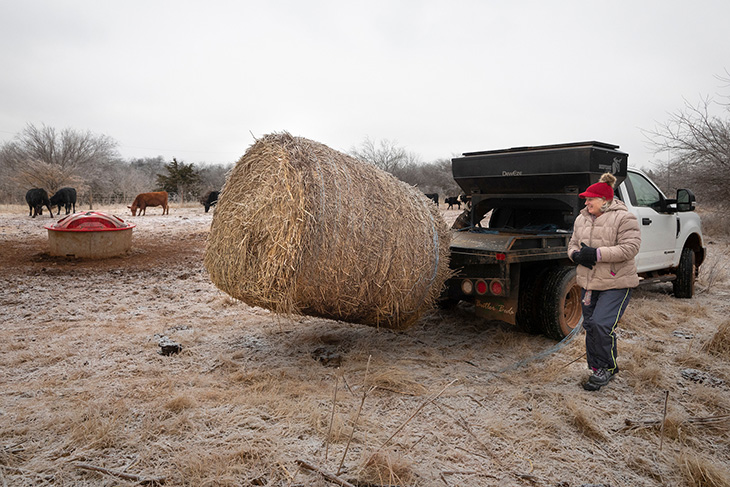Take steps to maximize available hay in cattle operations
Friday, February 12, 2021
Cattle producers are only halfway through the hay feeding season, so it’s a good time to double-check they’re not wasting that precious resource, said experts with Oklahoma State University’s Department of Animal and Food Sciences.
“Management of input costs can mean the difference between operational profit or loss,” said David Lalman, OSU Extension beef cattle specialist and holder of the university’s Harrington Endowed Chair in Animal Science. “Costs associated with nutrition have been shown to contribute 40% to 60% of the annual budget of a typical cow-calf operation. When it comes to hay waste, using the right type of bale feeder can make a significant cost-savings difference.”
A 2011 study by Lalman and other scientists with OSU's Division of Agricultural Sciences and Natural Resources examined four bale feeder designs: a conventional open-bottom steel ring, a sheeted-bottom steel ring, a polyethylene pipe ring and a modified cone feeder with a sheeted bottom. Hay waste was the lowest for the cone feeder, while the polyethylene feeder and the open-bottom steel ring feeder had the highest percentage of waste – 5.3% compared with 21% and 20.5%, respectively. The sheeted-bottom feeder had an intermediate waste level of 13%.
Producers may choose to simply unroll hay bales and let cattle graze on the ground. Many operations use a bale bed or a tractor with a hay unroller to make windrows of hay bales during the winter. There are several issues with unrolling hay, not the least of which is hay waste if cattle are fed several days’ worth of hay at a time – often 25% to 50% waste.

When unrolling hay, OSU Extension recommendations are to feed only as much hay as the cattle will clean up each day. Larger amounts fed every third day or longer will lead to more waste.
Another challenge with unrolling hay is that producers often will have favorite hay feeding areas based primarily on convenient access.
“Continuing to feed hay in the same place can lead to the concentration of a lot of nutrients from the hay and from animal manure and urine, all in a relatively small area,” said Paul Beck, OSU Extension beef cattle specialist and holder of the university’s Dennis and Marta White Endowed Chair in Animal Science.
Various research trials indicate there can be 10 to 20 times more phosphorus, potassium and organic matter in those types of hay feeding areas than in the surrounding pasture. Rotating hay feeding areas and unrolling hay across a pasture throughout the winter months will help spread out the nutrients.
In addition, cows like to calve and then bring their calves to their favorite hay feeding site. Poor hygiene in those areas during calving can lead to health issues such as scours and navel ill in calves.
Fact sheets detailing research-based best management practices for cattle and calves are available online and through OSU Extension county offices.
Oklahoma is annually the nation’s fourth- or fifth-leading producer of cattle and calves, according to U.S. Department of Agriculture National Agricultural Statistics Service data.
MEDIA CONTACT: Donald Stotts | Agricultural Communications Services | 405-744-4079 | donald.stotts@okstate.edu
